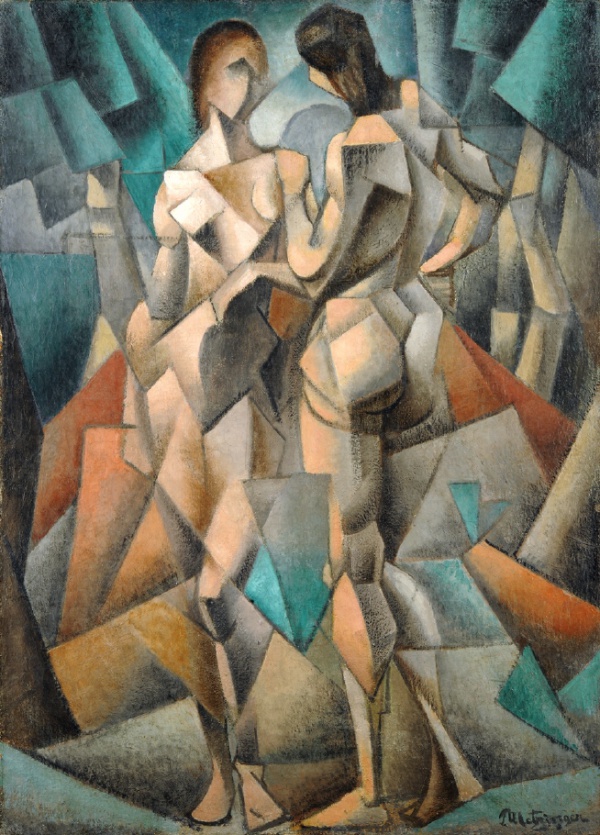Facts About Deux Nus (Two Nudes)
"Deux Nus" is an early Cubist painting by Jean Metzinger that garnered significant attention when it was first exhibited at the 1911 Salon des Indépendants in Paris, an event often regarded as the official inception of the Cubist movement. The painting subsequently traveled to Barcelona for an exhibition in 1912.
Around 1908-1909, Metzinger transitioned from Divisionism to Analytic Cubism, delving into various aspects of form. In "Deux Nus" he employed what he termed 'mobile perspective' to depict objects from multiple viewpoints simultaneously.
What distinguished Metzinger from contemporaries like Picasso and Braque was his emphasis on elegance and his seamless integration of figures and their environments. His oeuvre was rich with mathematical and philosophical underpinnings, which broadened its appeal. Influenced by chronophotography, he conveyed motion by layering sequential images.
The 1911 Indépendants exhibition was transformative, showcasing Cubist works by Metzinger, Gleizes, and Léger, among others. Their unconventional styles provoked considerable discussion. Despite the controversy, Metzinger's "Deux Nus" received acclaim for its intimate and cohesive composition. This exhibition marked a pivotal moment in art history, contributing to the popularization of the term "Cubism."

 Finland
Finland